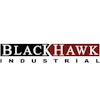ELEVEN INSIGHTS INTO THE FUTURE
OF MANUFACTURING
+1 714 996 5302
www.parsec-corp.com
180 N Riverview Drive No. 300
Anaheim, CA 92808, United States
TM
Cr y s t a l Bal l of Manufac tur ing2
From the onset of the Industrial Revolution to today’s
technology driven economy, manufacturing has provided
jobs, spurred growth, and enabled consumers to enjoy a
higher quality of life. While many factors affect the strength
of manufacturing, it is often these same factors that are a
key driving force behind global commerce. According to the
National Association of Manufacturers (NAM), manufacturers
today contribute over $2.17 trillion to the U.S. economy1.
While some may think of manufacturing as strictly related
to machinery and assembly lines, it is interesting to note
that driving productivity and innovation are two of its main
contributions. Increases in productivity without associated
increases in costs lead to improved quality of living for many
more people around the globe. One could argue that modern
day manufacturing is responsible for a significant portion
of the innovation in the world – with many of the products
and goods the consuming public enjoys being the result of
advanced techniques applied to manufacturing.
Cr y s t a l Bal l of Manufac tur ing 3
Like most businesses, manufacturing is subject to cycles of stagnation and
acceleration. Historically, improved manufacturing has led to the growth of the
service sector, which in turn has led to a diminished manufacturing base. Regardless,
given the important role that manufacturing plays, it would be interesting to look at
what we can expect in the next few years.
ON THE HORIZON
Cr y s t a l Bal l of Manufac tur ing4
Improved Visibility
We will have the systems and diagnostic tools available to
dramatically increase visibility and communications among
various components of the manufacturing value stream.
Think, industrial internet of things (IIoT).
Increased Flexibility
Euromonitor International outlines ten global consumer
trends, but chief among them is a demand for more choice
and variety2. Manufacturers will no longer be able to produce
a “one size fits all” product and hope that the buying public will
respond. Consumer input will be required, and processes will
have to be adaptable in order to quickly respond to changes
in demand.
Environmental Sensitivities
Pressures related to climate issues, pollution, and finite
natural resources will force manufacturers to increase their
environmental mindfulness. More green processes will be
developed to operate with less waste and pollution.
Higher Quality
Manufacturers will be pushed to produce higher quality
products at lower cost. As the global markets expand,
consumers will have more choices and the ability to buy goods
that were previously out of their reach. Producers with better
products will thrive.
Local Sourcing
As demand for goods proliferates around the world, local
sourcing will move into the spotlight. It will matter even more
to have local production – especially for products with short
shelf lives. Local manufacturing will eliminate many logistics
challenges and greatly lower transportation costs.
Shift in Labor Resources
As technology advances, the demand for low-skill production
workers will decrease. There will be less need for hands-on
labor, but an increase in demand for knowledge workers.
Manufacturers will need to plan for a skills transition in their
workforce.
Cr y s t a l Bal l of Manufac tur ing 5
Smart Manufacturing
Using better visibility, connected systems, predictive analytics, and more efficient
operations will lead to the emergence of smart manufacturing: sensitive to consumer
demand, environmentally aware, innovative, adaptable, less susceptible to wild swings,
and ultimately more profitable.
Streamlined Processes
The time to research and develop products and bring them to market will decrease even
more. Better processes and lowered cost of manufacturing will lead to the availability
of higher quality products in the global market – in larger quantities – in ways that were
not previously economically viable.
Repurposing and Reinventing
Advanced technology, better insights, and smarter manufacturing processes will lead
to rethinking, reinventing, and repurposing existing products for new applications. For
example, consider the mobile phone and how its evolution into a smart device has
completely altered the computing landscape.
More Transparency
Regulatory requirements will continue to become more stringent while the impact of
violation and noncompliance will become prohibitively expensive. However, improved
visibility together with enhanced process capability and maturity will make the needed
transparency possible – both for internal purposes and regulatory agencies to ensure
good manufacturing practices.
Increased Competitiveness
Technology will act as a catalyst to level the playing field. More manufacturers will
be able to compete for market share in progressively more sophisticated goods that
may currently be out of their reach. This will fuel competitiveness that will drive both
innovation and productivity.
Advanced technology,
better insights, and
smarter manufacturing
processes will lead to
rethinking, reinventing,
and repurposing existing
products for new
applications
ROLE OF SOFTWARE
IN THE FUTURE OF
MANUFACTURING
To remain relevant manufacturers must be able to get more out of their capital
assets. A very effective approach to getting this done is to leverage purpose-designed
operations management software. This is already happening at a rapid pace and
will only accelerate. Software will be a main component of manufacturing moving
forward.
Advances in software will allow manufacturers to be more agile, more flexible, and
more competitive. Because information is inherent in this process, manufacturers
will rely more on intelligence-based decision making throughout the supply chain –
and will be ready to deliver new products more quickly with significantly better life
cycle management.
Taking into consideration the expected trends just reviewed,
software will play an even more critical role in the future of
manufacturing.
Cr y s t a l Bal l of Manufac tur ing6
Cr y s t a l Bal l of Manufac tur ing 7
Cr y s t a l Bal l of Manufac tur ing8
Many of the trends discussed will present challenges
to those manufacturers who cannot adapt quickly and
maintain the necessary pace to remain relevant. More
ubiquitous technologies, larger global markets, and the
ever-present appetite for newer and better products will
drive manufacturing competitiveness to new heights.
CHALLENGES
AHEAD
Cr y s t a l Bal l of Manufac tur ing 9
Growth will affect the availability of expert labor pools. Geopolitical events will impact trade balances. Availability of resources
will influence regional industrial hubs. Manufacturing activities will inextricably be tied to the necessary services to provide
better experiences for the consumers. Environmental and safety regulations will impact the cost of manufactured goods.
A proper mix of human resources, knowhow, and technology will be needed to meet the challenges that lie ahead. It is a complex
journey where manufacturers need to commit to purposeful innovation and agility to regularly adjust, repurpose, and invent.
Cr y s t a l Bal l of Manufac tur ing10
Cr y s t a l Bal l of Manufac tur ing 11
References
1 http://www.nam.org/Newsroom/Top-20-Facts-About-Manufacturing/
2 http://www.euromonitor.com/10-global-consumer-trends-for-the-next-five-years/report
About Parsec
Parsec is the developer of TrakSYS™, a proven operations management software application
and solution platform designed to significantly improve manufacturing processes. Parsec is
committed to providing best-in-class products and solutions to our worldwide community of
clients to assist them in optimizing their manufacturing operations. There are thousands of
TrakSYS™ licenses in use around the globe in a wide variety of Industries.
TrakSYS™ helps manufacturers to maximize asset utilization and efficiency, increase capacity
with no new capital equipment, reduce production costs, decrease lead time, and improve
profitability. For more information about Parsec and TrakSYS™ please visit the corporate
website at www.parsec-corp.com.
ELEVEN INSIGHTS INTO THE FUTURE OF MANUFACTURING
Like most businesses, manufacturing is subject to cycles of stagnation and acceleration. Manufacturers will no longer be able to produce a “one size fits all” product and hope that the buying public will respond. It would be interesting to look at what we can expect in the next few years.
Latest in Home
BlackHawk Adds McNutt as Northeast Region GM
September 16, 2025
Ferguson Reports Strong Results to Finish '25
September 16, 2025
Wesco Invests $10M in Procurement Software Startup
September 15, 2025






















